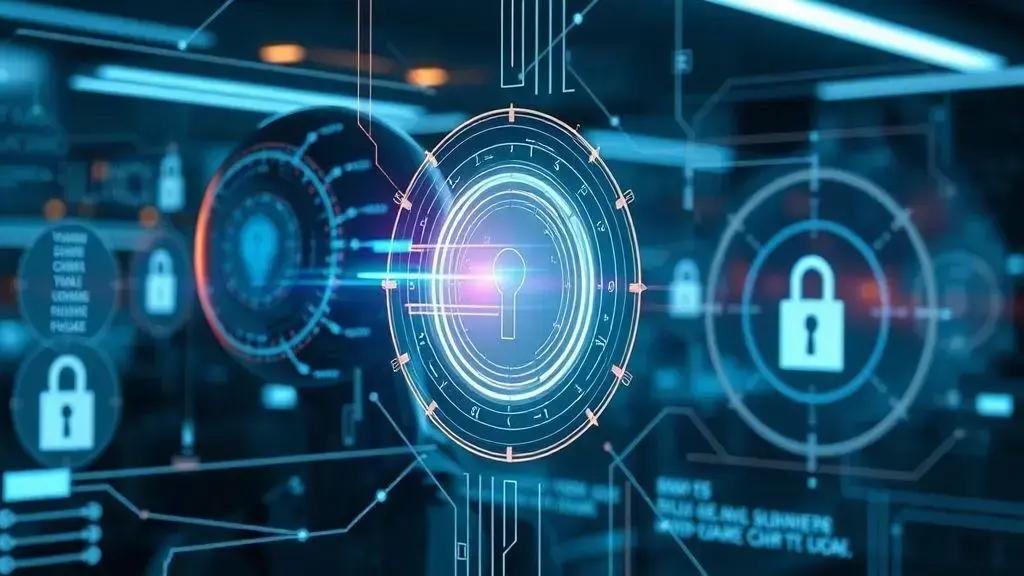Educational modules on digital identity security: your guide
Digital identity security involves protecting personal information online through measures like strong passwords, two-factor authentication, and regular updates, while staying informed about emerging threats such as phishing and data breaches.
Educational modules on digital identity security are essential for anyone navigating today’s digital landscape. Have you considered how vulnerable your personal information might be? Let’s dive into what you need to know.
Understanding digital identity security
Understanding digital identity security is crucial in this age of technology. By knowing how to protect your online self, you can prevent identity theft and maintain your privacy.
Digital identity security involves keeping your personal information safe, especially in online environments. This means knowing what to share and what to keep private. An essential aspect is understanding the main threats that individuals face.
Key Threats to Digital Identity
Many people underestimate the threats lurking online. Some common risks include:
- Phishing attacks, where hackers trick you into giving away sensitive information.
- Data breaches, which can expose your information to the dark web.
- Malware, harmful software that can steal your data.
- Social engineering, where attackers manipulate you into revealing private data.
It’s vital to take these threats seriously. By being aware of them, you can better prepare yourself.
Best Practices for Keeping Your Identity Secure
Now that you understand the risks, let’s discuss ways to protect yourself:
- Use strong, unique passwords for different accounts.
- Enable two-factor authentication whenever possible.
- Be cautious of unsolicited emails or messages.
- Regularly monitor your online accounts for any suspicious activities.
Implementing these practices can significantly reduce your chances of becoming a victim. Additionally, staying updated on the latest security trends and technologies will help.
Being proactive about your digital identity security is a smart choice. With each step you take, you build a stronger barrier against potential threats.
Key threats to online identity

Key threats to online identity are more prevalent than ever. Understanding these threats is the first step to protecting your personal information in the digital world.
Every day, individuals face multiple risks that can compromise their online safety. Some of these threats are more common than others, but all can lead to serious consequences if not addressed.
Common Threats to Your Identity
Among the most significant threats are:
- Phishing Scams: Attackers use fake emails or websites to trick you into revealing sensitive information.
- Data Breaches: Large companies can accidentally expose your data due to weak security measures, leaving you vulnerable.
- Malware Attacks: Infected software can steal your private information without your knowledge.
- Social Engineering: Manipulating you into giving away personal details is a tactic used by many cybercriminals.
By knowing these risks, you can better defend yourself against them. It’s important to remain vigilant and proactive in your online activities.
Other Emerging Threats
Additionally, new threats are constantly evolving. For example, identity theft can happen through stolen credentials or through fake profiles on social media.
In many cases, people don’t realize their identity has been compromised until it’s too late. Continuous monitoring of your accounts and being aware of unusual activities can help you catch these issues early.
By staying informed and implementing the proper measures, you can significantly reduce the chances of falling victim to these threats.
Implementing effective security measures
Implementing effective security measures is vital for safeguarding your online identity. Knowing what steps to take can help protect your personal information.
One of the first steps is to create strong passwords. Using a mix of letters, numbers, and symbols makes passwords harder to guess. You should also avoid using the same password for multiple accounts.
Key Security Measures to Consider
Here are some essential measures everyone can take:
- Two-Factor Authentication: This adds an extra layer of security. Even if someone knows your password, they cannot access your account without the second factor.
- Regular Software Updates: Keeping your software up to date protects you against vulnerabilities that hackers might exploit.
- Secure Your Internet Connection: Use a strong Wi-Fi password and switch to a VPN when using public networks to shield your data.
- Educate Yourself: Stay informed about the latest threats and scams. Understanding how they work can help you recognize and avoid them.
By implementing these security measures, you create a safer online experience. It’s also important to regularly review your privacy settings across social media platforms, ensuring that you control who sees your information.
Don’t forget to monitor your accounts. If you notice any suspicious activity, report it immediately. Quick action can minimize potential damage.
Overall, adopting a proactive approach to security helps protect your digital identity. Every step you take adds another layer of defense.
The future of digital identity security

The future of digital identity security is constantly evolving as technology progresses. As more people engage online, the need for robust security measures grows.
Emerging technologies will play a key role in shaping how we protect our identities. One significant advancement is the use of artificial intelligence to detect and counteract threats in real-time.
Trends to Watch
Several trends are likely to impact digital identity security:
- Biometric Authentication: Using fingerprints, facial recognition, or retina scans can enhance security. It’s more difficult for cybercriminals to replicate these features.
- Decentralized Identity Solutions: Blockchain technology can offer individuals better control over their data, reducing reliance on centralized systems.
- AI and Machine Learning: These technologies will help predict and respond to security threats quickly, making online environments safer.
- Increased Privacy Regulations: Governments are likely to implement stricter regulations to protect consumer data and enhance online security practices.
As these trends develop, individuals and businesses must stay informed and adapt to the changing landscape. Being proactive means understanding new technologies and incorporating them into security practices.
The focus will also shift more towards user education and awareness. Individuals need to know how to protect themselves against potential threats. Simple practices, like recognizing phishing attempts or managing passwords, will remain essential.
To sum up, the journey toward a more secure digital identity is ongoing. By embracing new technologies and staying educated, we can pave the way for a safer online future.
FAQ – Frequently Asked Questions about Digital Identity Security
What are the main threats to my digital identity?
The main threats include phishing scams, data breaches, and malware attacks that can compromise your personal information.
How can I protect my online accounts?
You can protect your accounts by using strong passwords, enabling two-factor authentication, and regularly updating your software.
What role does AI play in digital identity security?
AI helps detect and respond to security threats in real-time, enhancing your overall online protection.
Why is continuous learning important for digital security?
Continuous learning allows you to stay informed about new security threats and best practices, ensuring you can adapt to a changing digital landscape.





